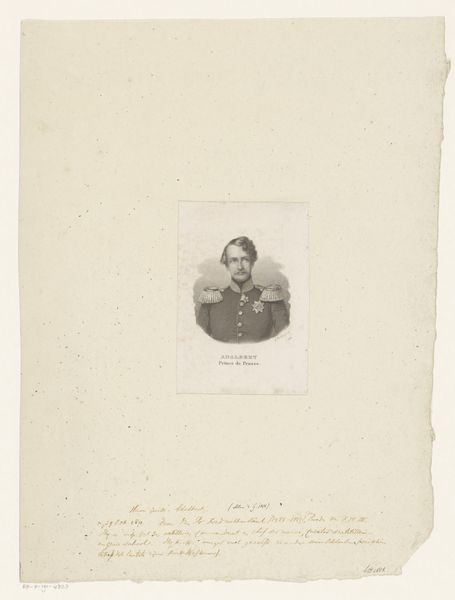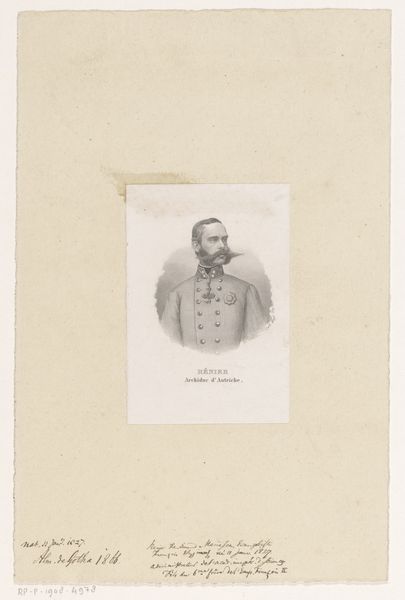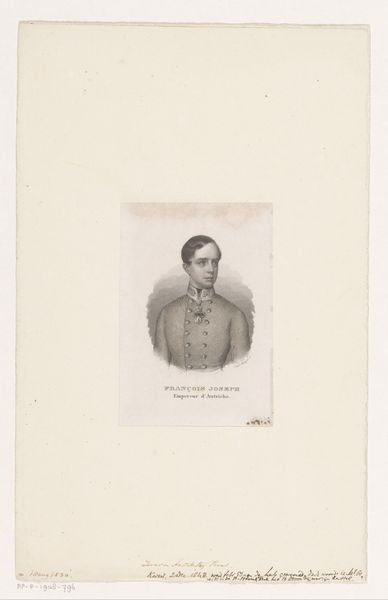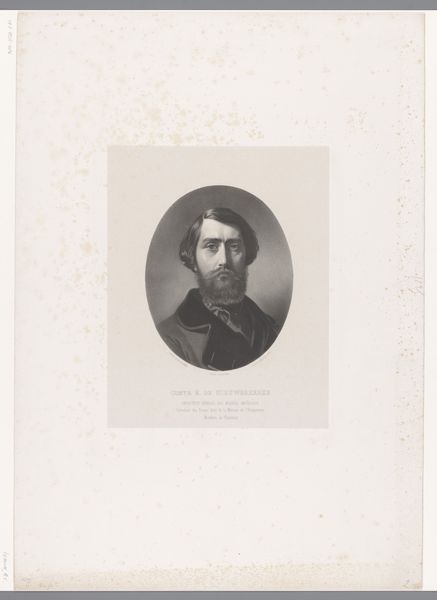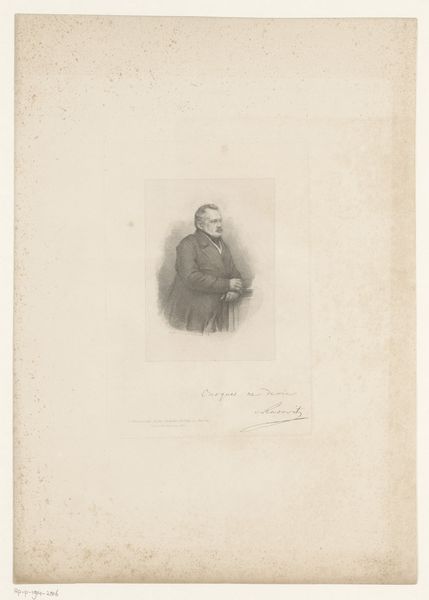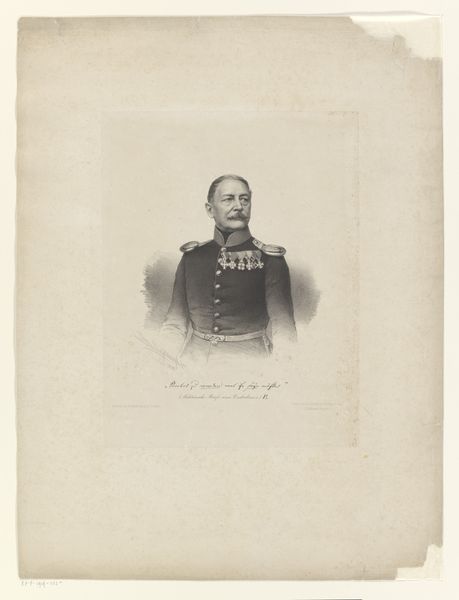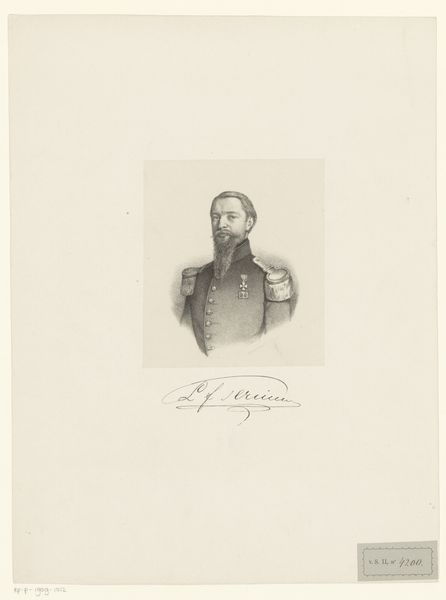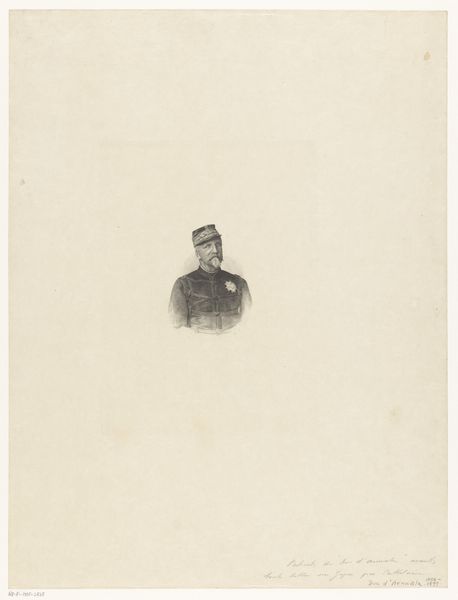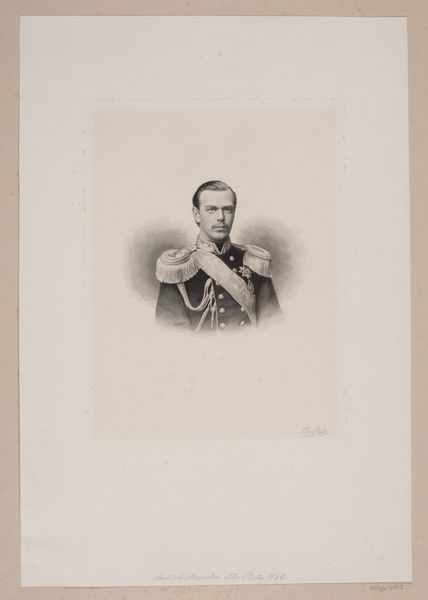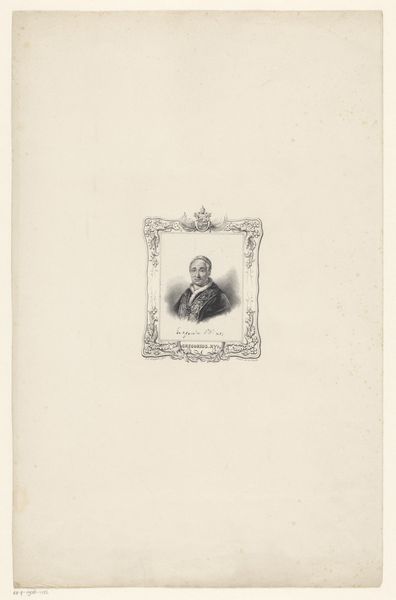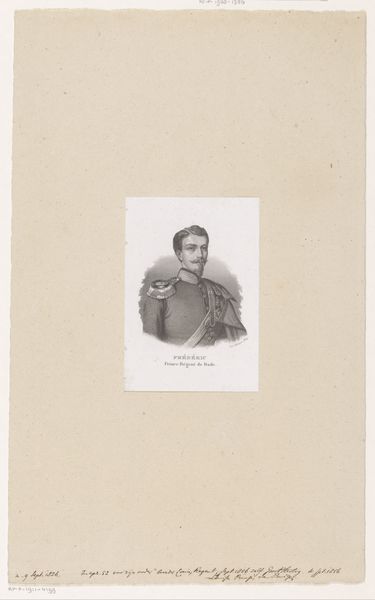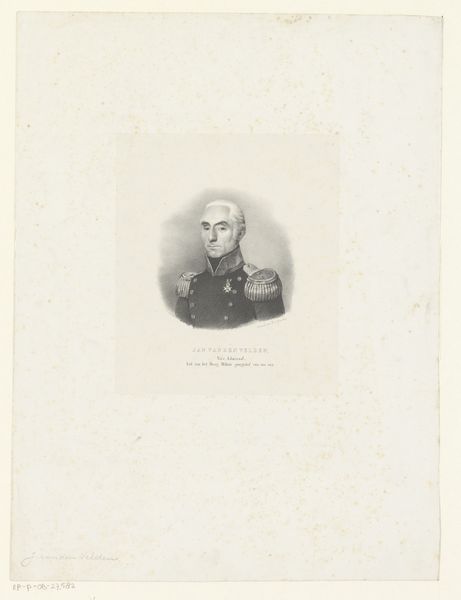
drawing, graphite
#
portrait
#
drawing
#
16_19th-century
#
graphite
#
academic-art
#
realism
Dimensions: height 365 mm, width 265 mm, height 439 mm, width 337 mm
Copyright: Rijks Museum: Open Domain
Franciscus Bernardus Waanders created this portrait of J.P.J. Snabilié using lithography, a printing technique, on paper. Lithography, unlike engraving, relies on the repulsion between grease and water. The artist draws an image on a flat stone or metal plate with a greasy crayon, then applies water. The water adheres to the bare stone, while the greasy areas repel it. When ink is rolled over the surface, it sticks only to the greasy image, which is then transferred to paper. The final print shows soft gradations of tone, achieved by varying the pressure and density of the crayon strokes. The resulting aesthetic is one of precision and fine detail. This method allowed for relatively quick and inexpensive reproduction, making images like this accessible to a wider audience. Consider the social impact of this technology, and the way it democratized image-making. It offered new opportunities for artists, and played a role in shaping public perception of individuals like J.P.J. Snabilié, whose stern gaze reflects the growing power of the merchant class in the 19th century.
Comments
No comments
Be the first to comment and join the conversation on the ultimate creative platform.
